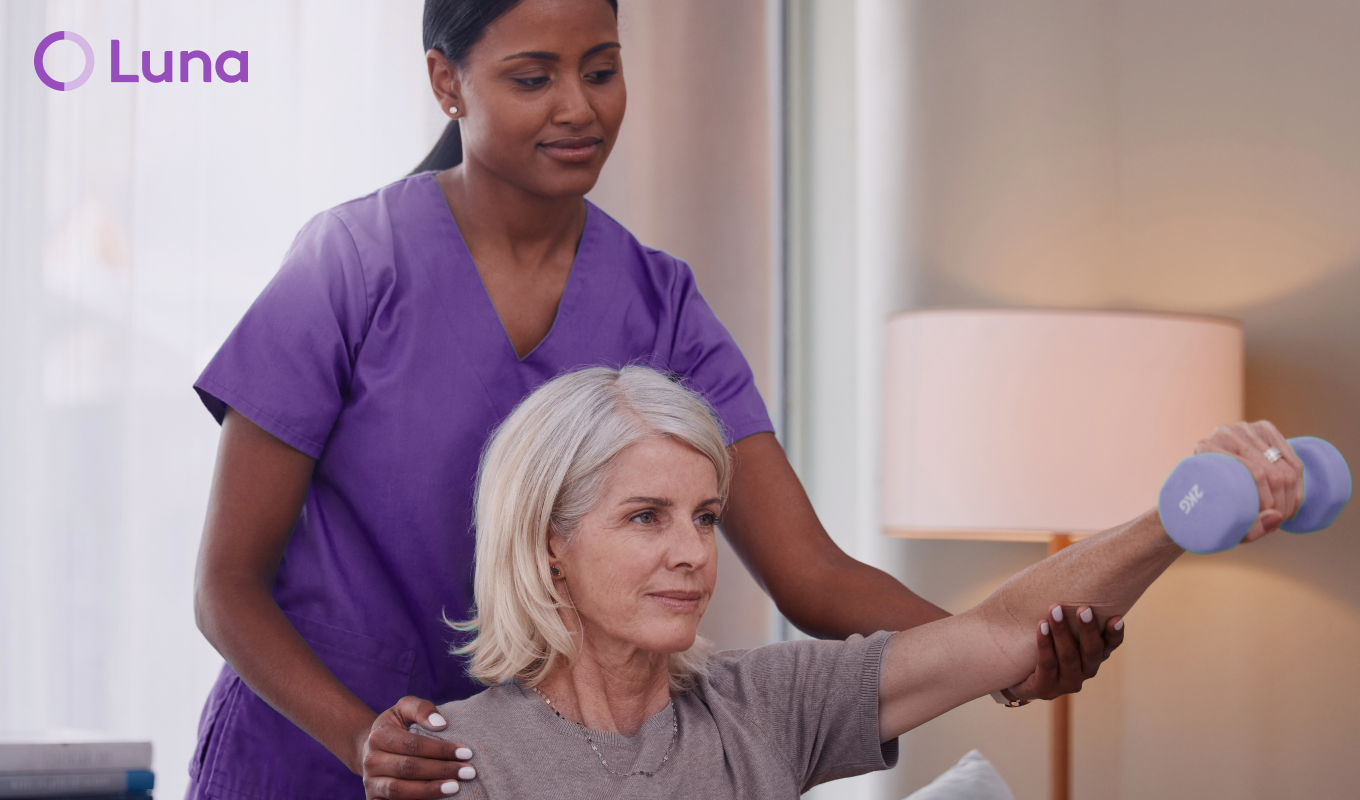
Meet with the best de Quervain’s physical therapists in Chelsea, New York
Chelsea, New York, Luna has physical therapists that specialize in treating patients with de Quervain’s tenosynovitis and other forms of wrist tendonitis. Our PTs will work with you to identify and adjust the movements that are causing and aggravating your symptoms, helping you to reduce pain and increase mobility.
Best of all, with Luna, patients can receive physical therapy for de Quervain’s right in the comfort of their own homes. Our physical therapists come to you — it’s physical therapy, delivered.

What is de Quervain’s?
De Quervain’s tenosynovitis (also known as de Quervain’s disease or de Quervain’s syndrome) is a condition that affects the tendons on the thumb side of the wrist. Tendons are rope-like structures that connect the muscle and bone; they run through “tunnels” made up of soft tissue
In patients with de Quervain’s, the tendons no longer fit comfortably in the tunnel because the soft tissue in the tunnel has either increased or thickened. When this occurs, simple hand and thumb motions can cause pain, especially during grasping or twisting motions.
It’s unknown what causes de Quervain’s, though it’s believed that repetitive motions, hormonal changes, and swelling can all play a role. It appears in people of all ages and genders, however, it is more common in women and in people between the ages of 30 and 50.
Source: ASSH

What causes de Quervain’s?
De Quervain’s is most commonly attributed to overuse of the wrist, though it’s not known exactly what causes the condition to occur. It has also been tied to direct injury of the wrist or tendons, as well as inflammatory arthritis. There are also a number of risk factors that can make a patient more likely to develop de Quervain’s.
Age is a major risk factor; people between the ages of 30 and 50 are most likely to develop the condition. It’s also somewhat more common in women, and it appears also to be linked to pregnancy and motherhood. New mothers have been known to develop the condition, but it’s not clear whether pregnancy itself or childcare activities such as lifting a baby repeatedly is the primary source of the condition.
The most common causes of de Quervain’s tenosynovitis include:
- Repetitive thumb and wrist motions
- Inflammatory arthritis
- Wrist injury
- Age
- Sex






















